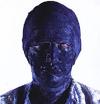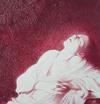Press and Media
What's On, London – May 17, 2000
Gottfried Helnwein, LONDON, 2000
NEW KIDS OUT TO SHOCK
A blonde Madonna, dressed as if she were spending an evening at the opera, presents her child to the watchful eyes of Nazi SS Guards, One officer looks as if he were studying the child's genitals, perhaps to see whether he has been circumcised. Dark hair parted severely to one side and fleshy baby cheeks lending a slight and comical hangdog expression, the young child presents something of an eerie resemblance to the Führer.
In another image, a young girl, wearing a white dress, lies prone on a table. She appears to be in a deep sleep and is surrounded by disfigured World War One veterans. Perhaps their calm, watchful presence suggests that the Great War led directly to the birth of a generation asleep to its own unspeakable atrocities.
Gottfried Helnwein, responsible for these strange and unsettling images, is an Austrian artist born in the years immediately after World War Two. Despite achieving huge success and acclaim in the States, where he is exhibited regularly, Helnwein's name and work are little known in the UK. In fact, his show at the Robert Sandelson Gallery is his very first solo exhibition here.
Helnwein is an artist who has never been afraid of causing outrage in those offended or made uncomfortable by talk of Germany's Nazi past and of Austria's complicity in it. Once, as a student, he paraded the streets of his home town dressed up as Hitler, spewing forth theatrical blood from his mouth - a memorably outrageous gesture at the time, if only for the fact that, like that famous Fawlty Towers sketch where all mention of "the war" was a closed one in front of its German guests, Austria would make no gesture to acknowledgement to it either. (Until the '80s Austria had an official policy of denial, neglecting to address the subject even in school text books.)
"I know that individuals are poorly treated on this planet," Helnwein has said. "They are being harmed and subdued. And all this is covered by optimistic propaganda. Long before I began painting I felt that humanity was in dire straits. The pain reaches out to everyone, even though it is rarely spoken of. Nonetheless, everyone wants to overcome pain, to transcend it."
For all Helnwein's humanist proclamations, it must be said that his work is never quite so unequivocal. Standing in front of the works you're never quite clear how to read Helnwein's disturbing images. The surreal, uncomfortable juxtapositions of both Nazi and Christian iconography, never present straightforward interpretations. Nor are they merely polemical in any agit-prop sense. There is a sense in which Helnwein seems to court controversy; he also clearly delights in a certain moral ambiguity, a shadiness which perversely makes his images all the more compelling.
An early turning point in his choice of imagery came for Helnwein in 1979. In this year Dr. Heinrich Gross was appointed Head of State Psychiatry in Austria. In an interview published in one of Austria's major national newspapers, he was asked whether he had killed hundreds of children in mental hospitals under the Nazi euthanasia programme. Gross said yes, and commented that "at the time it was a different reality. Today I wouldn't do it." Asked if he had injected the children, he replied that he had "just mixed poison in their food", adding that since they were unaware of what was going on, the young victims had died humanely. That interview with Gross caused no reaction in Helnwein's country.
But it was in response to this interview that Helnwein first began using images of children in his painting, addressing their helplessness and pain by depicting them as broken, disfigured doll-like creatures. When he read Gross' self-justification as a "humane" killer, Helnwein responded by producing a photorealist painting of a girl slumped in a plate of food. Only then was a debate initiated which ultimately led to Gross' resignation.
Though Helnwein is no mere polemicist, he clearly believes in an art which has the power not only to confront and challenge, but also to make some real changes.
17.May.2000 What's On, London Fisun Güner


